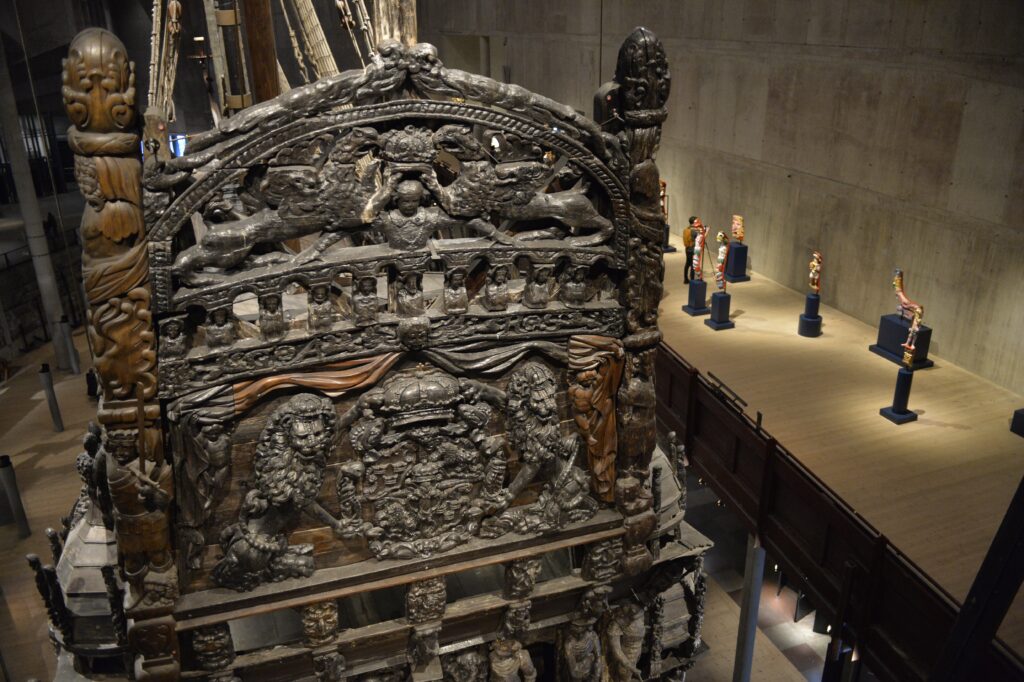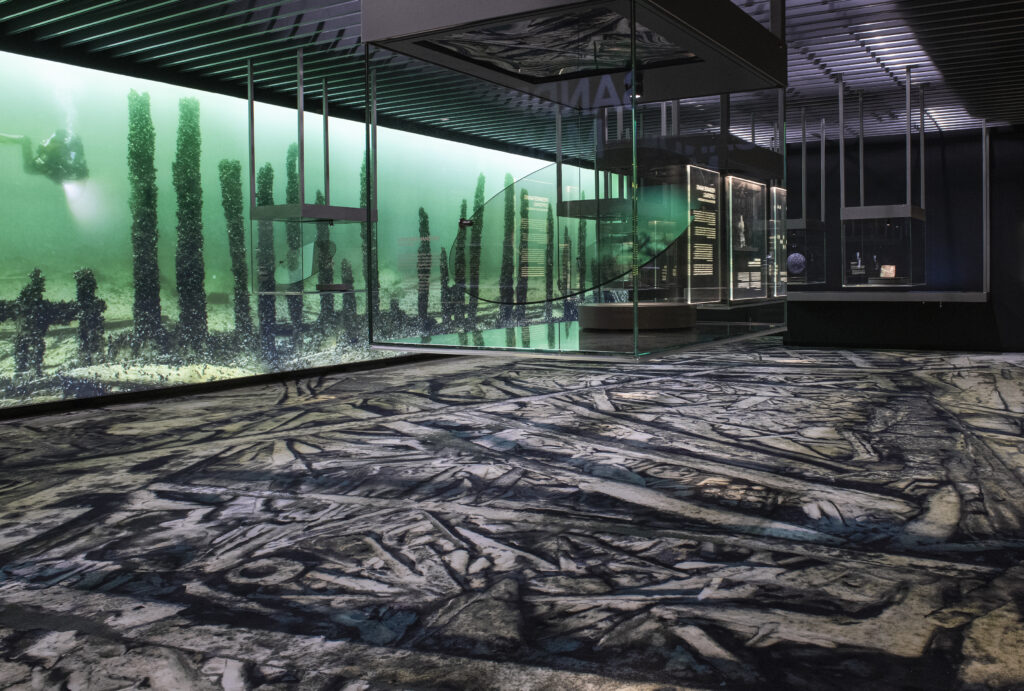
The Vasa Museum, a maritime museum in Stockholm, Sweden, features the world’s best preserved, 17th century ship. One of the most visited museums in Scandinavia, the Vasa Museum is home to a Baltic Sea “Titanic”—a three hundred year-old war vessel that capsized and sank in the shallow waters of Stockholm harbor. Open all year, the Vasa Museum is one of the top rated and most notable museums in Stockholm, adding to the diversity of this historic and colorful city.
Named after the massive, wooden, oceangoing vessel, the Vasa Museum exhibits the restored ship in astonishingly superb condition. Sinking shortly after leaving port in 1628, the Vasa was rediscovered in 1961. Located on an island named Djugården in Stockholm, the Vasa Museum is easily accessible, family friendly, and historically focused. Discover the history of Swedish warships, shipyards, life on board, and maritime conservation strategies—all integral pieces of Scandinavian history.
Visiting the Vasa: Details about the Exhibits
Upon entering the museum, an introductory video of Vasa’s history welcomes guests. The short film offers an engineer’s explanation as to how a gust of wind tipped the Vasa over. The film also delves into the Vasa’s rediscovery, preservation and relocation. After this brief recap, visitors enter the main part of the museum, where they are confronted by Vasa herself.
Centered around Vasa, multiple exhibits educate visitors about the ship’s structure, history, and sculptures. For example, at the Vasa Up Close exhibit, learn about the significance of the ship’s ornaments, sculptures and decorations. Similarly to iconography in the Catholic church, Vasa’s art is symbolic to convey sovereignty of the Swedish empire and King. The Power and the Glory exhibit displays reconstructed sculptures to replicate a likeness of their original condition. The Vasa sculptures were stained a dark brown from spending 333 years at the bottom of the sea. However, after twelve years of color analysis, experts brought color restoration to these sculptures; the vibrancy and variety of colors stun visitors.

The Stockholm Shipyard exhibit features 17th-century, Swedish ship models to explain how the Vasa was swallowed by the sea, shortly after setting sail. The exhibit shares the building process of ships in the 1620’s such as: engineering plans, manual labor, equipment and materials. For visual context, The Vasa Model exhibit displays a carefully researched and crafted model of the Vasa in scale 1:10. The model was built to give viewers an idea of how the vessel might have looked in 1628.
Other exhibits, such as Vasa’s Women and Face to Face, teach visitors about the importance women’s roles played in the Vasa’s construction. The Face to Face exhibit shares stories of the sailors, survivors and victims onboard the Vasa during its short maiden voyage and sinkage. The museum also includes an interactive exhibit called Life on Board, which illustrates daily life onboard the Vasa such as, work shifts, responsibilities, nutrition, clothing, and illnesses. The Life on Board exhibit displays original tools and clothes found on the Vasa.
The Vasa Museum dedicates a major exhibit to the restoration efforts of Vasa after it was rediscovered in the 20th century. The Salvaging exhibit contains models demonstrating the process of carefully extracting the ship from the water. The Preserve Vasa exhibit discloses ongoing research efforts to minimize decay of the ship.
The grandiose exhibits at the Vasa Museum leave visitors in awe and coming back a second time. Ultimately, the Vasa Museum is family friendly, educational, entertaining and interactive.

Disembark at The Vasa Museum Garden
From sea to land, The Vasa Museum Garden exhibit grows many of the plants and vegetables common in the 17th century. The variety of produce, herbs and flowers allows visitors to imagine life in the 1600’s. Stop and smell the flowers after touring the Vasa Museum.

Your Next Journey: More Ships in Scandinavia!
Dive deep at the Vrak – Museum of Wrecks and discover other wooden wrecks salvaged from the Baltic Sea. The Vasa Museum’s sister museum, Vrak – Museum of Wrecks, is also located in Stockholm, a five minute walk from the Vasa Museum.

If you enjoy learning about ancient ships, the Scandinavian region offers rich maritime history. Notably, the Museum of Cultural History of Norway, reopening in 2025, exhibits Viking ships dating back to the 9th century. If you can’t wait until 2025 to see ancient ships, The Viking Ship Museum of Denmark features five restored Viking ships. Another option for those interested in Scandinavian maritime history is the Lofotr Viking Museum in Norway. This museum offers more history about the Viking period in Norway including some insight into their nautical adventures. Lastly, learn about a more contemporary vessel in Norway at the Fram Museum. This museum highlights Norway’s polar exploration of the Arctic and Antarctic. In the end, the Scandinavian region offers a diverse range of museums to learn about the region’s long, honorable, and exciting maritime history.
[Written November 2021]
Cover photo: Karolina Kristensson, the Vasa Museum/SMTM.


Leave a Reply